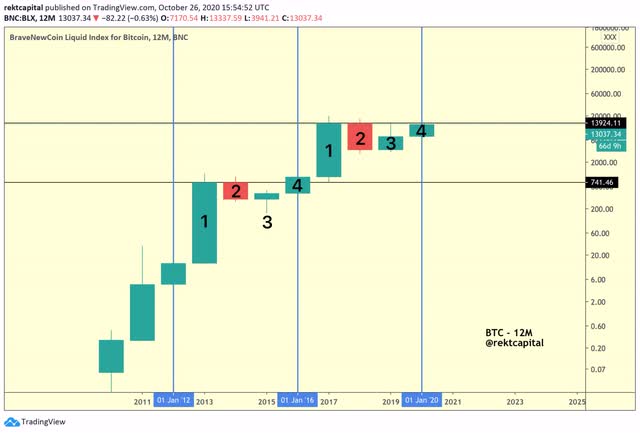As a thought experiment, imagine if Bitcoin (BTC-USD) was a physical agricultural commodity. If an investor somehow knew that a wildfire would destroy half of the incoming supply in the near future, never to return, he or she would surely front run that event by going long. What if this supply shock occurred every four years? As long as demand remains steady, that commodity’s price would increase substantially. The commodity’s price action would also be highly cyclical. As a consumable good, consumers would switch to a substitute good as price grew to unsustainable levels. As a store of value, the commodity would be doing its job.
A key assumption is “as long as demand remains steady.” Bitcoin is one-tenth the market capitalization of gold and superior in scarcity, divisibility, and portability. It is the only absolutely scarce and liquid asset that exists at the end of a long-term debt cycle when Central Banks must print to avoid a deflationary spiral. It is also a decentralized payment rail that avoids time and fees of traditional wire transfers. I believe Bitcoin will continue to see steady adoption in the face of cyclical supply shocks.
This article examines the anatomy of the four-year Bitcoin price cycle. It will provide a price projection for the current price cycle and it will inform investors of the best buying and selling opportunities within a cycle. Buying and holding with a long-term time horizon will always be the best strategy. Around the margins, investors can generate additional alpha by understanding cycle dynamics.
The anatomy of the price cycle
The chart below, created by Rekt Capital, demonstrates two complete cycles using twelve-month candlesticks. This section expounds on much of the work provided in his article here.
 (Source: "Bitcoin's Four Cycle: An Extensive Analysis")
(Source: "Bitcoin's Four Cycle: An Extensive Analysis")
Phase 1
Phase 1 is